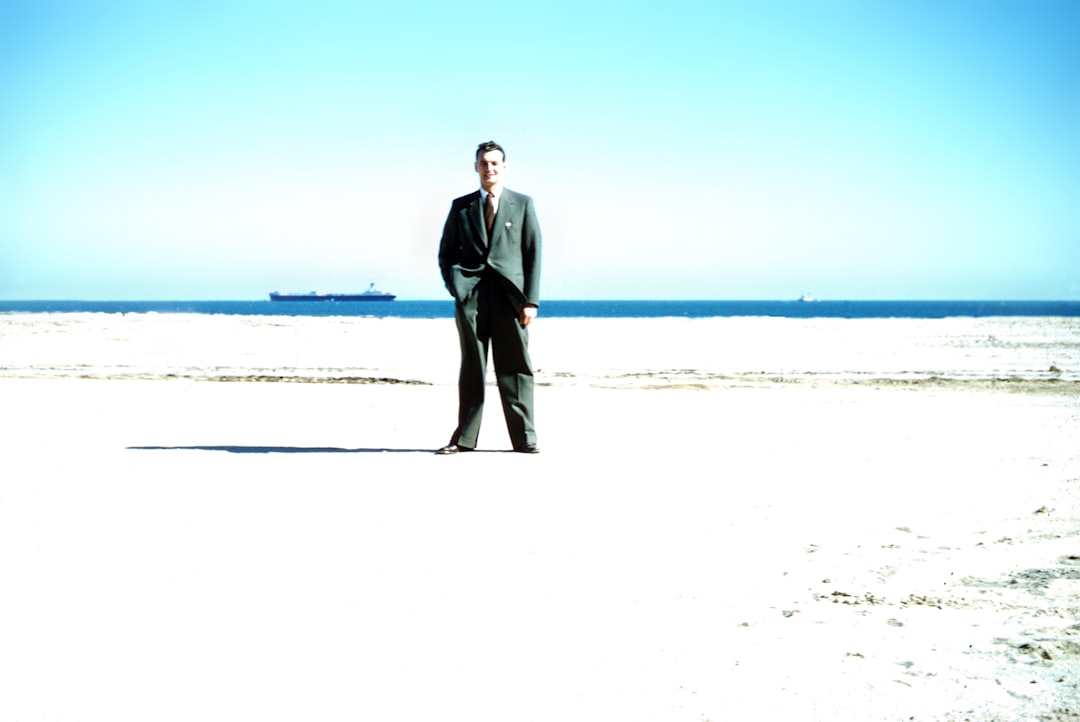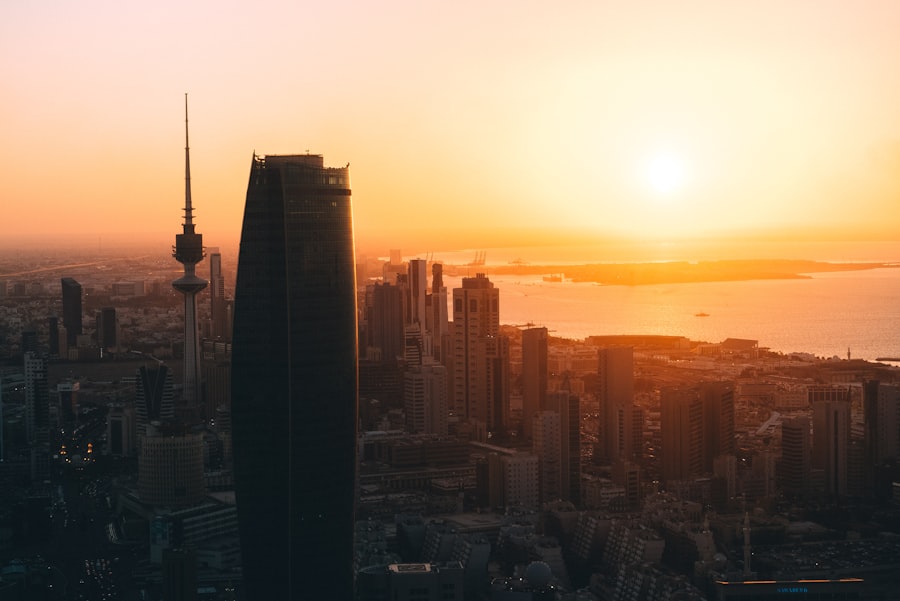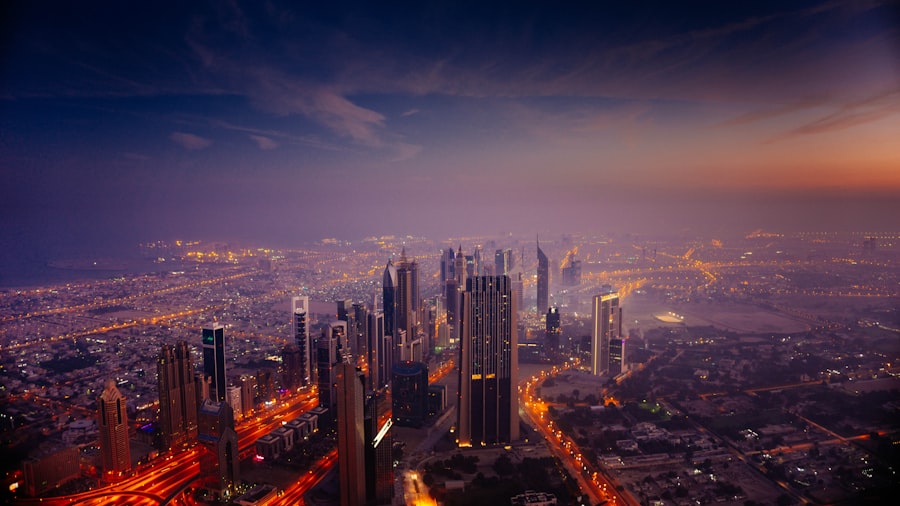
Kuwait, a small yet significant nation located at the northwestern tip of the Persian Gulf, is often overshadowed by its larger neighbors. Despite its modest size, Kuwait boasts a rich tapestry of history, culture, and modernity that captivates visitors and scholars alike.
With a population of approximately 4.3 million people, Kuwait is a melting pot of cultures, influenced by its Bedouin roots, Islamic traditions, and the waves of expatriates who have settled in the region over the decades. The capital city, also named Kuwait, serves as the political, economic, and cultural heart of the nation. The skyline is dominated by modern skyscrapers and traditional architecture, reflecting the country’s rapid development since the discovery of oil in the 20th century.
This wealth has allowed Kuwait to invest heavily in infrastructure, education, and healthcare, transforming it into one of the most developed countries in the Arab world. Visitors to Kuwait will find a unique blend of old and new, where ancient traditions coexist with contemporary lifestyles, making it an intriguing destination for travelers seeking both history and modernity.
Key Takeaways
- Kuwait is a small but wealthy country located in the Middle East, known for its oil reserves and modern infrastructure.
- The country has a rich history and culture, with influences from ancient Mesopotamia, Islamic traditions, and Bedouin heritage.
- Must-visit places in Kuwait include the iconic Kuwait Towers, the Grand Mosque, and the historical Souq Mubarakiya.
- Natural wonders and landmarks in Kuwait include the beautiful Failaka Island, the serene Al Shaheed Park, and the impressive Al Hamra Tower.
- Modern Kuwait showcases stunning architecture and urban development, with landmarks like the Kuwait National Cultural District and the Al Shaheed Park Tower.
Historical and Cultural Facts
Ancient Origins and Strategic Location
Kuwait’s history dates back to ancient times, with evidence of human settlement in the region as far back as 3000 BC. The area was known for its strategic location along trade routes connecting Mesopotamia with the Arabian Peninsula. The name “Kuwait” is derived from the Arabic word “kut,” meaning fortress, which reflects its origins as a small fishing village and trading post.
Cultural Influences and Traditions
The cultural fabric of Kuwait is woven from various influences, including Bedouin traditions, Islamic heritage, and the impact of foreign cultures due to trade and migration. The country has a rich oral tradition, with poetry and storytelling playing a vital role in preserving its history. Traditional music and dance are integral to Kuwaiti culture, with performances often featuring instruments like the oud and the darbuka.
Celebrating Kuwaiti Heritage
The annual Hala February Festival showcases this cultural richness through art exhibitions, musical performances, and traditional crafts, drawing both locals and tourists to celebrate Kuwaiti heritage. This festival is a testament to the country’s vibrant cultural scene and its efforts to preserve its unique heritage for future generations.
Must-Visit Places in Kuwait

One of the most iconic landmarks in Kuwait is the Kuwait Towers, which stand majestically along the coastline. Completed in 1979, these three towers symbolize modern Kuwait and offer breathtaking panoramic views of the city and the Arabian Gulf from their observation decks. The towers are not only architectural marvels but also house restaurants and a café, making them a popular spot for both locals and tourists to enjoy a meal while taking in the stunning vistas.
Another must-visit location is the Grand Mosque, one of the largest mosques in the country. Completed in 1986, this architectural masterpiece can accommodate over 10,000 worshippers. Its stunning domes, intricate mosaics, and beautiful calligraphy reflect Islamic artistry at its finest. Visitors are welcome to explore the mosque outside of prayer times, providing an opportunity to learn about Islamic practices and admire the craftsmanship that went into its construction.
Guided tours are available to enhance the experience, offering insights into the mosque’s significance in Kuwaiti society.
Natural Wonders and Landmarks
| Landmark | Location | Height/Size | Year of Discovery |
|---|---|---|---|
| Grand Canyon | Arizona, USA | 277 miles long, 18 miles wide, 1 mile deep | 1540 |
| Great Barrier Reef | Australia | 133,000 square miles | 1770 |
| Mount Everest | Nepal/China border | 29,029 feet | 1856 |
| Niagara Falls | Canada/USA border | 167 feet | 1678 |
Kuwait’s natural landscape is diverse, featuring coastal areas, deserts, and islands that offer unique experiences for nature enthusiasts. One notable natural wonder is Failaka Island, located just off the coast of Kuwait City. This island is rich in history and archaeological sites dating back to ancient Mesopotamia.
Visitors can explore remnants of Greek settlements and enjoy pristine beaches that provide a serene escape from the bustling city life. The island is also home to various wildlife species, making it an ideal spot for birdwatching and nature walks. The Al Jahra Pools Nature Reserve is another remarkable destination that showcases Kuwait’s commitment to preserving its natural environment.
This reserve features lush greenery and artificial lakes that attract migratory birds during certain seasons. It serves as a habitat for various species of flora and fauna, providing an oasis for both wildlife and visitors seeking tranquility away from urban life. The reserve is equipped with walking trails and picnic areas, making it a popular spot for families looking to enjoy a day outdoors.
Modern Kuwait: Architecture and Urban Development
Kuwait’s urban landscape has undergone significant transformation over the past few decades, driven by rapid economic growth fueled by oil revenues. The architectural scene is characterized by a blend of traditional Islamic design elements and cutting-edge modernism. One striking example is the Sheikh Jaber Al Ahmad Cultural Centre, which stands as a testament to Kuwait’s commitment to arts and culture.
This expansive complex includes theaters, galleries, and concert halls, designed with innovative architecture that reflects both functionality and aesthetic appeal. The Avenues Mall is another landmark that exemplifies modern urban development in Kuwait. Spanning over 1 million square meters, it is one of the largest shopping malls in the Middle East.
The mall features a diverse range of international brands, dining options, and entertainment facilities. Its design incorporates elements inspired by various global architectural styles while maintaining a distinctly Kuwaiti identity. The Avenues has become a social hub for residents and visitors alike, showcasing how modernity can harmoniously coexist with cultural heritage.
Hidden Gems: Off the Beaten Path in Kuwait

While many visitors flock to well-known attractions in Kuwait, there are hidden gems that offer unique experiences away from the crowds. One such place is the Sadu House, located in Kuwait City. This cultural center is dedicated to preserving traditional Bedouin weaving techniques known as Sadu.
Visitors can explore exhibits showcasing intricate textiles and learn about their significance in Kuwaiti culture. Workshops are often held where participants can try their hand at weaving under the guidance of skilled artisans. Another lesser-known destination is the Tareq Rajab Museum, which houses an extensive collection of Islamic art and artifacts.
This private museum features over 30,000 items ranging from ceramics to textiles and jewelry. The museum provides insight into the rich artistic heritage of the Islamic world and offers a quiet space for reflection away from the bustling city life.
Kuwait’s charm lies not only in its prominent landmarks but also in its ability to surprise those willing to explore beyond the surface. From cultural centers that celebrate traditional crafts to museums that showcase Islamic art’s beauty, these hidden gems provide a deeper understanding of what makes Kuwait unique. Each visit reveals new layers of history and culture waiting to be discovered by those who venture off the beaten path.
If you’re interested in exploring more about different countries and their unique attributes, you might find the article on “China Facts and Places to Visit” quite enlightening. Similar to the comprehensive details provided about Kuwait, this article delves into the rich history, culture, and must-see destinations in China. From the Great Wall to the bustling streets of Shanghai, it offers a thorough overview that could be beneficial for both travelers and those looking to expand their knowledge about global destinations. You can read more about it by visiting China Facts and Places to Visit.
FAQs
What are some interesting facts about Kuwait?
– Kuwait is located in the Middle East, bordered by Iraq and Saudi Arabia.
– The official language is Arabic and the currency is the Kuwaiti Dinar.
– Kuwait has a rich oil industry and is one of the world’s largest oil producers.
What are some popular places to visit in Kuwait?
– The Kuwait Towers, iconic landmarks of Kuwait City, offer panoramic views of the city and the Arabian Gulf.
– The Grand Mosque, also known as the Kuwait State Mosque, is the largest mosque in Kuwait and a significant Islamic landmark.
– The Kuwait National Museum showcases the history and culture of Kuwait, including artifacts and exhibits from the country’s past.
What are some must-see sights in Kuwait?
– The Liberation Tower, standing at 372 meters, is one of the tallest telecommunications towers in the world and offers stunning views of the city.
– The Souq Al-Mubarakiya is a traditional market in Kuwait City, offering a wide range of goods including spices, textiles, and traditional Kuwaiti handicrafts.
– The Scientific Center in Salmiya is a popular educational and entertainment complex featuring an aquarium, a discovery place, and an IMAX theater.



